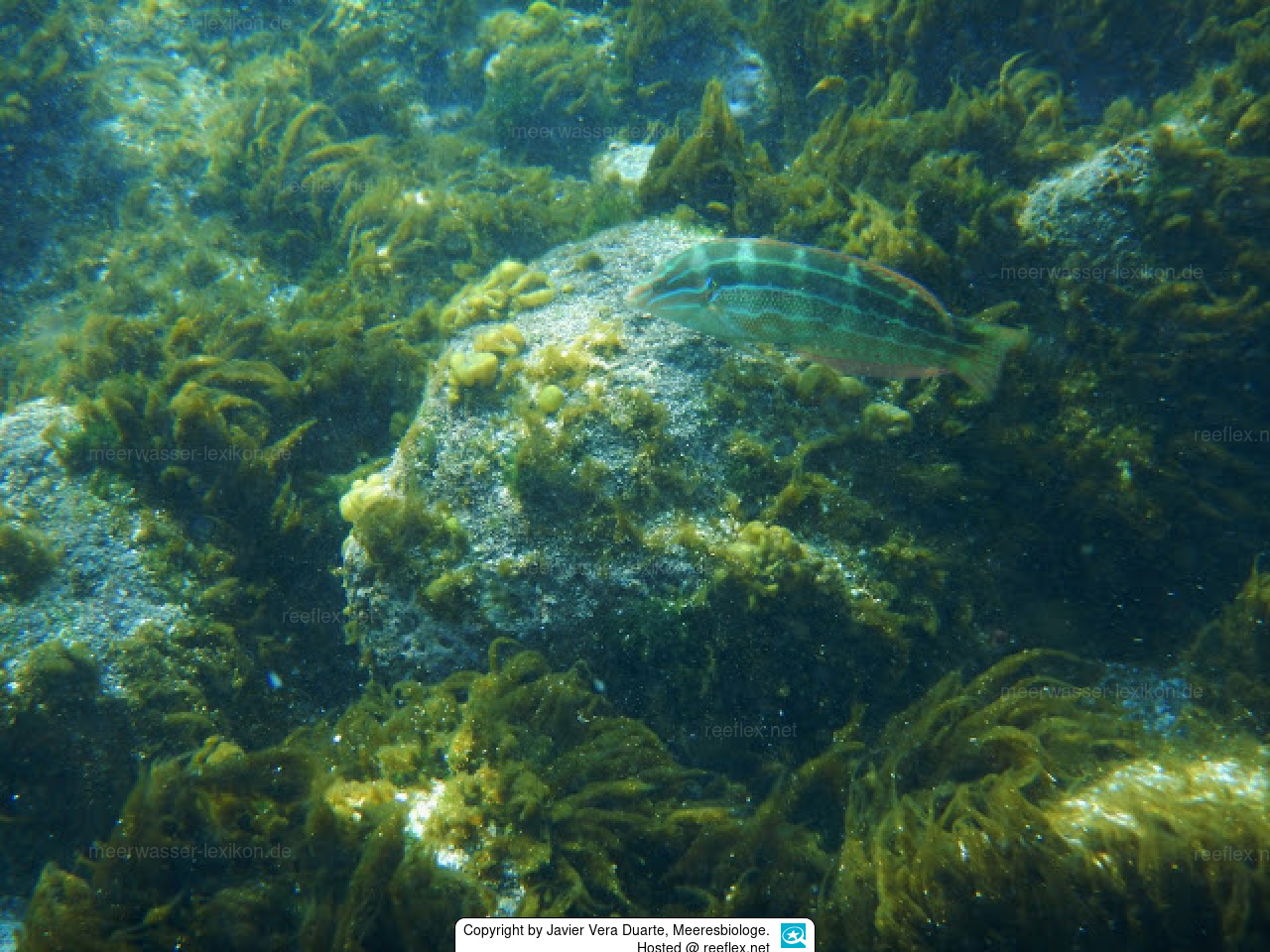Info
Randall, 1999
Very special thanks for the first photos of Coris debueni to Javier Vera-Duarte, Facultad de Ciencias del Mar y Recursos Naturales,
Universidad de Valparaíso, Chile.
De Buen's coris is known only from Easter Island in the eastern Pacfiic.
The Rapanui wrasse, also called Easter Island coris occurs in areas of mixed sand and rubble in depths of 1-60 meters.
Juveniles are often found in tide pools, but may occur in deeper waters.
The wrasse feeds on gastropods (mainly Strombus maculatus), pelecypods (with mytilid and Lima), ophiuroids (Ophiocoma), hermit crabs (Pagurus pascuensis), crabs (with Trapezia), and echinoids, with molluscs as the major prey items.
Source: IUCN Red List
Classification: Biota > Animalia (Kingdom) > Chordata (Phylum) > Vertebrata (Subphylum) > Gnathostomata (Superclass) > Pisces (Superclass) > Actinopterygii (Class) > Perciformes (Order) > Labroidei (Suborder) > Labridae (Family) > Coris (Genus) > Coris debueni (Species)
Jumping guard
A jumping guard prevents (nocturnal) fish from jumping out.
Wrasses, blennies, hawkfishs and gobies jump out of an unprotected tank in fright if their night rest is disturbed, unfortunately these jumpers are found dried up in the morning on carpets, glass edges or later behind the tank.
https://www.korallenriff.de/en/article/1925_5_Jump_Protection_Solutions_for_Fish_in_the_Aquarium__5_Net_Covers.html
A small night light also helps, as it provides the fish with a means of orientation in the dark!
Very special thanks for the first photos of Coris debueni to Javier Vera-Duarte, Facultad de Ciencias del Mar y Recursos Naturales,
Universidad de Valparaíso, Chile.
De Buen's coris is known only from Easter Island in the eastern Pacfiic.
The Rapanui wrasse, also called Easter Island coris occurs in areas of mixed sand and rubble in depths of 1-60 meters.
Juveniles are often found in tide pools, but may occur in deeper waters.
The wrasse feeds on gastropods (mainly Strombus maculatus), pelecypods (with mytilid and Lima), ophiuroids (Ophiocoma), hermit crabs (Pagurus pascuensis), crabs (with Trapezia), and echinoids, with molluscs as the major prey items.
Source: IUCN Red List
Classification: Biota > Animalia (Kingdom) > Chordata (Phylum) > Vertebrata (Subphylum) > Gnathostomata (Superclass) > Pisces (Superclass) > Actinopterygii (Class) > Perciformes (Order) > Labroidei (Suborder) > Labridae (Family) > Coris (Genus) > Coris debueni (Species)
Jumping guard
A jumping guard prevents (nocturnal) fish from jumping out.
Wrasses, blennies, hawkfishs and gobies jump out of an unprotected tank in fright if their night rest is disturbed, unfortunately these jumpers are found dried up in the morning on carpets, glass edges or later behind the tank.
https://www.korallenriff.de/en/article/1925_5_Jump_Protection_Solutions_for_Fish_in_the_Aquarium__5_Net_Covers.html
A small night light also helps, as it provides the fish with a means of orientation in the dark!







 Javier Vera Duarte, Meeresbiologe, Chile
Javier Vera Duarte, Meeresbiologe, Chile





























